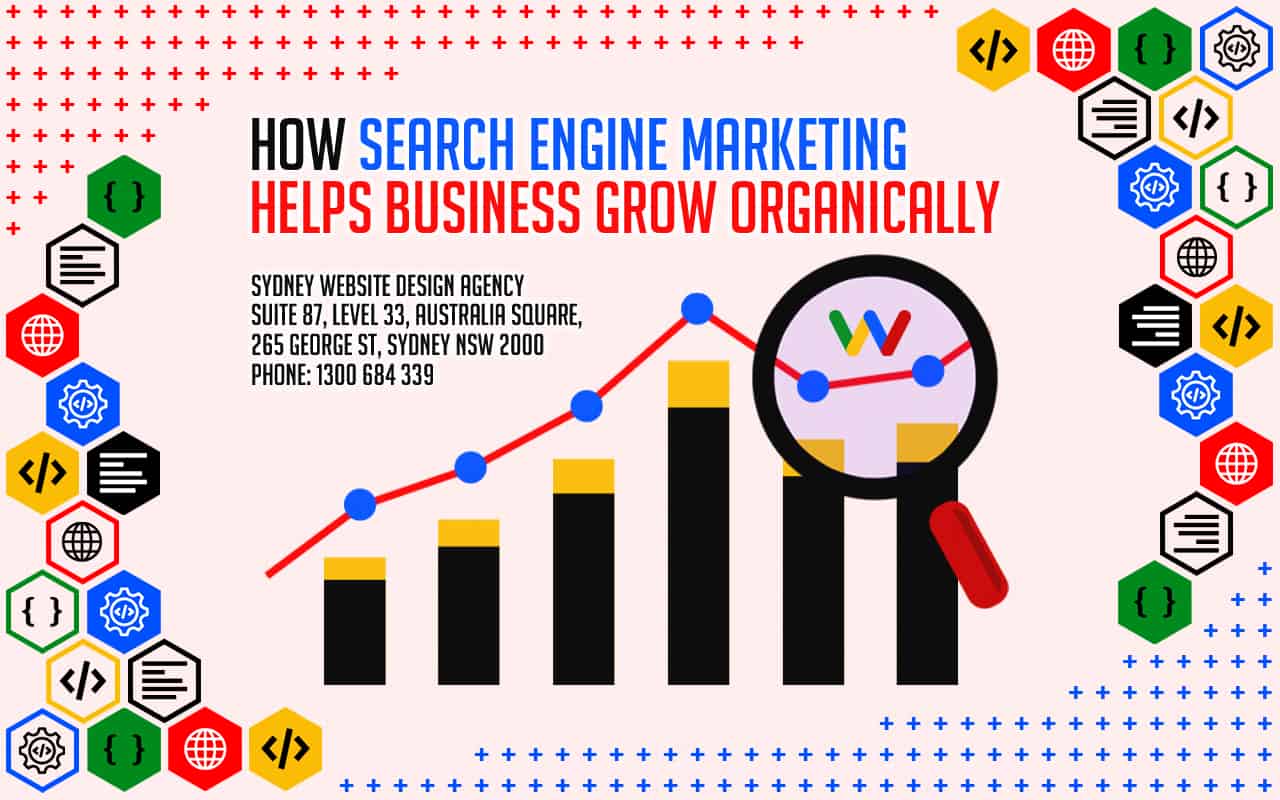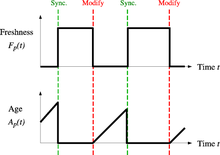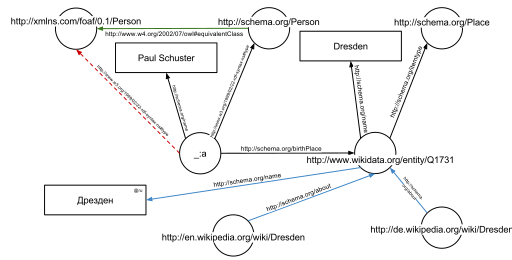

Listing business on Google"Listing a business on Google involves creating a Google My Business profile, verifying the location, and optimizing the listing with accurate information, photos, and customer reviews. This helps improve local visibility, attract more customers, and build a stronger online reputation."
local business citations"Local business citations are online mentions of a companys name, address, and phone number.
local intent keywordsLocal intent keywords include phrases that indicate a users search for nearby products or services. Best SEO Agency Sydney Australia. Optimizing for these terms helps businesses attract a local audience and improve foot traffic.
Best SEO Sydney Agency.Local link building"Local link building focuses on acquiring backlinks from businesses, organizations, and directories within your geographic area. Best Search Engine Optimisation Services. By building local connections, you improve visibility in local search results and strengthen your sites authority in the region."
Local SEO"Local SEO focuses on optimizing a businesss online presence to attract customers in a specific geographic area. By targeting location-based keywords, improving local citations, and managing online reviews, businesses can dominate local search results and build a stronger community presence."
Local SEO agency"A local SEO agency specializes in helping businesses improve their visibility in region-specific searches. By focusing on location-based keywords, optimizing Google My Business listings, and building local citations, these agencies connect businesses with nearby customers and enhance their community presence."
Local SEO Australia"Local SEO services in Australia focus on improving a businesss online presence in a specific region. Best Local SEO Sydney. By targeting location-based keywords, optimizing local directories, and managing reviews, these services help businesses connect with nearby customers and increase foot traffic."
Local SEO services"Local SEO services optimize a businesss online presence within a specific region. By targeting location-based keywords, managing directory listings, and creating geo-targeted content, these services connect businesses with nearby customers and help them dominate local search results."
Local SEO services Sydney"Local SEO services in Sydney focus on optimizing a businesss digital presence within a specific region. These services include local keyword research, Google My Business management, and geo-targeted content strategies, all aimed at helping businesses connect with nearby customers and enhance their local reputation."


Local SEO specialists"Local SEO specialists focus on optimizing a businesss online presence within a specific region. comprehensive SEO Audit services. By targeting local keywords, managing directory listings, and creating location-specific content, these specialists help businesses attract more local customers and improve their community reputation."
Local SEO Sydney"Local SEO services in Sydney focus on optimizing a businesss online presence to attract customers in a specific geographical area. By leveraging strategies such as Google My Business optimization, local keyword targeting, and local link building, businesses can dominate local search results, increase foot traffic, and build strong community connections."
Local SEO Sydney"Local SEO in Sydney targets geographically relevant search terms to connect businesses with nearby customers. By optimizing local directories, managing online reviews, and creating location-specific content, these strategies increase visibility and attract more foot traffic to brick-and-mortar stores."
long-form content keywordsLong-form content keywords support in-depth articles that thoroughly address a topic. These keywords help you capture search traffic from users seeking detailed information and enhance your contents authority.
long-form content optimization"Long-form content optimization involves refining detailed, in-depth articles to improve search visibility and user engagement. range of SEO Packages Sydney and Australia . By incorporating relevant keywords, structuring content clearly, and adding multimedia elements, businesses can rank higher and provide more value to readers."
long-tail keywords"Long-tail keywords are more specific, less competitive search terms that often have higher conversion rates. By targeting these keywords, businesses can reach a more focused audience, improve rankings, and attract highly qualified traffic."


long-tail keywords"Long-tail keywords are more specific, less competitive phrases that often yield higher conversion rates. These terms attract a more targeted audience, making it easier to rank well and generate quality traffic."
low-competition keywordsLow-competition keywords are easier to rank for because fewer websites target them. Focusing on these terms can help smaller sites gain visibility without needing an extensive backlink profile.
low-competition long-tail keywordsLow-competition long-tail keywords are detailed phrases that are easier to rank for due to limited competition. These keywords help you gain visibility and attract targeted traffic without extensive SEO resources.
LSI keywords"Latent Semantic Indexing (LSI) keywords are closely related terms that help search engines understand context. By including these keywords, you enhance content relevance and improve search rankings."
market-specific keywordsMarket-specific keywords focus on the unique terms used within a particular industry. Targeting these keywords helps you appeal directly to your niche audience and improve relevancy.
meta description enhancement"Improving meta descriptions makes them more descriptive, engaging, and keyword-rich. A well-crafted meta description helps attract clicks, provides a clear summary of the content, and signals relevance to search engines."


A Web crawler, sometimes called a spider or spiderbot and often shortened to crawler, is an Internet bot that systematically browses the World Wide Web and that is typically operated by search engines for the purpose of Web indexing (web spidering).[1]
Web search engines and some other websites use Web crawling or spidering software to update their web content or indices of other sites' web content. Web crawlers copy pages for processing by a search engine, which indexes the downloaded pages so that users can search more efficiently.
Crawlers consume resources on visited systems and often visit sites unprompted. Issues of schedule, load, and "politeness" come into play when large collections of pages are accessed. Mechanisms exist for public sites not wishing to be crawled to make this known to the crawling agent. For example, including a robots.txt file can request bots to index only parts of a website, or nothing at all.
The number of Internet pages is extremely large; even the largest crawlers fall short of making a complete index. For this reason, search engines struggled to give relevant search results in the early years of the World Wide Web, before 2000. Today, relevant results are given almost instantly.
Crawlers can validate hyperlinks and HTML code. They can also be used for web scraping and data-driven programming.
A web crawler is also known as a spider,[2] an ant, an automatic indexer,[3] or (in the FOAF software context) a Web scutter.[4]
A Web crawler starts with a list of URLs to visit. Those first URLs are called the seeds. As the crawler visits these URLs, by communicating with web servers that respond to those URLs, it identifies all the hyperlinks in the retrieved web pages and adds them to the list of URLs to visit, called the crawl frontier. URLs from the frontier are recursively visited according to a set of policies. If the crawler is performing archiving of websites (or web archiving), it copies and saves the information as it goes. The archives are usually stored in such a way they can be viewed, read and navigated as if they were on the live web, but are preserved as 'snapshots'.[5]
The archive is known as the repository and is designed to store and manage the collection of web pages. The repository only stores HTML pages and these pages are stored as distinct files. A repository is similar to any other system that stores data, like a modern-day database. The only difference is that a repository does not need all the functionality offered by a database system. The repository stores the most recent version of the web page retrieved by the crawler.[citation needed]
The large volume implies the crawler can only download a limited number of the Web pages within a given time, so it needs to prioritize its downloads. The high rate of change can imply the pages might have already been updated or even deleted.
The number of possible URLs crawled being generated by server-side software has also made it difficult for web crawlers to avoid retrieving duplicate content. Endless combinations of HTTP GET (URL-based) parameters exist, of which only a small selection will actually return unique content. For example, a simple online photo gallery may offer three options to users, as specified through HTTP GET parameters in the URL. If there exist four ways to sort images, three choices of thumbnail size, two file formats, and an option to disable user-provided content, then the same set of content can be accessed with 48 different URLs, all of which may be linked on the site. This mathematical combination creates a problem for crawlers, as they must sort through endless combinations of relatively minor scripted changes in order to retrieve unique content.
As Edwards et al. noted, "Given that the bandwidth for conducting crawls is neither infinite nor free, it is becoming essential to crawl the Web in not only a scalable, but efficient way, if some reasonable measure of quality or freshness is to be maintained."[6] A crawler must carefully choose at each step which pages to visit next.
The behavior of a Web crawler is the outcome of a combination of policies:[7]
Given the current size of the Web, even large search engines cover only a portion of the publicly available part. A 2009 study showed even large-scale search engines index no more than 40–70% of the indexable Web;[8] a previous study by Steve Lawrence and Lee Giles showed that no search engine indexed more than 16% of the Web in 1999.[9] As a crawler always downloads just a fraction of the Web pages, it is highly desirable for the downloaded fraction to contain the most relevant pages and not just a random sample of the Web.
This requires a metric of importance for prioritizing Web pages. The importance of a page is a function of its intrinsic quality, its popularity in terms of links or visits, and even of its URL (the latter is the case of vertical search engines restricted to a single top-level domain, or search engines restricted to a fixed Web site). Designing a good selection policy has an added difficulty: it must work with partial information, as the complete set of Web pages is not known during crawling.
Junghoo Cho et al. made the first study on policies for crawling scheduling. Their data set was a 180,000-pages crawl from the stanford.edu domain, in which a crawling simulation was done with different strategies.[10] The ordering metrics tested were breadth-first, backlink count and partial PageRank calculations. One of the conclusions was that if the crawler wants to download pages with high Pagerank early during the crawling process, then the partial Pagerank strategy is the better, followed by breadth-first and backlink-count. However, these results are for just a single domain. Cho also wrote his PhD dissertation at Stanford on web crawling.[11]
Najork and Wiener performed an actual crawl on 328 million pages, using breadth-first ordering.[12] They found that a breadth-first crawl captures pages with high Pagerank early in the crawl (but they did not compare this strategy against other strategies). The explanation given by the authors for this result is that "the most important pages have many links to them from numerous hosts, and those links will be found early, regardless of on which host or page the crawl originates."
Abiteboul designed a crawling strategy based on an algorithm called OPIC (On-line Page Importance Computation).[13] In OPIC, each page is given an initial sum of "cash" that is distributed equally among the pages it points to. It is similar to a PageRank computation, but it is faster and is only done in one step. An OPIC-driven crawler downloads first the pages in the crawling frontier with higher amounts of "cash". Experiments were carried in a 100,000-pages synthetic graph with a power-law distribution of in-links. However, there was no comparison with other strategies nor experiments in the real Web.
Boldi et al. used simulation on subsets of the Web of 40 million pages from the .it domain and 100 million pages from the WebBase crawl, testing breadth-first against depth-first, random ordering and an omniscient strategy. The comparison was based on how well PageRank computed on a partial crawl approximates the true PageRank value. Some visits that accumulate PageRank very quickly (most notably, breadth-first and the omniscient visit) provide very poor progressive approximations.[14][15]
Baeza-Yates et al. used simulation on two subsets of the Web of 3 million pages from the .gr and .cl domain, testing several crawling strategies.[16] They showed that both the OPIC strategy and a strategy that uses the length of the per-site queues are better than breadth-first crawling, and that it is also very effective to use a previous crawl, when it is available, to guide the current one.
Daneshpajouh et al. designed a community based algorithm for discovering good seeds.[17] Their method crawls web pages with high PageRank from different communities in less iteration in comparison with crawl starting from random seeds. One can extract good seed from a previously-crawled-Web graph using this new method. Using these seeds, a new crawl can be very effective.
A crawler may only want to seek out HTML pages and avoid all other MIME types. In order to request only HTML resources, a crawler may make an HTTP HEAD request to determine a Web resource's MIME type before requesting the entire resource with a GET request. To avoid making numerous HEAD requests, a crawler may examine the URL and only request a resource if the URL ends with certain characters such as .html, .htm, .asp, .aspx, .php, .jsp, .jspx or a slash. This strategy may cause numerous HTML Web resources to be unintentionally skipped.
Some crawlers may also avoid requesting any resources that have a "?" in them (are dynamically produced) in order to avoid spider traps that may cause the crawler to download an infinite number of URLs from a Web site. This strategy is unreliable if the site uses URL rewriting to simplify its URLs.
Crawlers usually perform some type of URL normalization in order to avoid crawling the same resource more than once. The term URL normalization, also called URL canonicalization, refers to the process of modifying and standardizing a URL in a consistent manner. There are several types of normalization that may be performed including conversion of URLs to lowercase, removal of "." and ".." segments, and adding trailing slashes to the non-empty path component.[18]
Some crawlers intend to download/upload as many resources as possible from a particular web site. So path-ascending crawler was introduced that would ascend to every path in each URL that it intends to crawl.[19] For example, when given a seed URL of http://llama.org/hamster/monkey/page.html, it will attempt to crawl /hamster/monkey/, /hamster/, and /. Cothey found that a path-ascending crawler was very effective in finding isolated resources, or resources for which no inbound link would have been found in regular crawling.
The importance of a page for a crawler can also be expressed as a function of the similarity of a page to a given query. Web crawlers that attempt to download pages that are similar to each other are called focused crawler or topical crawlers. The concepts of topical and focused crawling were first introduced by Filippo Menczer[20][21] and by Soumen Chakrabarti et al.[22]
The main problem in focused crawling is that in the context of a Web crawler, we would like to be able to predict the similarity of the text of a given page to the query before actually downloading the page. A possible predictor is the anchor text of links; this was the approach taken by Pinkerton[23] in the first web crawler of the early days of the Web. Diligenti et al.[24] propose using the complete content of the pages already visited to infer the similarity between the driving query and the pages that have not been visited yet. The performance of a focused crawling depends mostly on the richness of links in the specific topic being searched, and a focused crawling usually relies on a general Web search engine for providing starting points.
An example of the focused crawlers are academic crawlers, which crawls free-access academic related documents, such as the citeseerxbot, which is the crawler of CiteSeerX search engine. Other academic search engines are Google Scholar and Microsoft Academic Search etc. Because most academic papers are published in PDF formats, such kind of crawler is particularly interested in crawling PDF, PostScript files, Microsoft Word including their zipped formats. Because of this, general open-source crawlers, such as Heritrix, must be customized to filter out other MIME types, or a middleware is used to extract these documents out and import them to the focused crawl database and repository.[25] Identifying whether these documents are academic or not is challenging and can add a significant overhead to the crawling process, so this is performed as a post crawling process using machine learning or regular expression algorithms. These academic documents are usually obtained from home pages of faculties and students or from publication page of research institutes. Because academic documents make up only a small fraction of all web pages, a good seed selection is important in boosting the efficiencies of these web crawlers.[26] Other academic crawlers may download plain text and HTML files, that contains metadata of academic papers, such as titles, papers, and abstracts. This increases the overall number of papers, but a significant fraction may not provide free PDF downloads.
Another type of focused crawlers is semantic focused crawler, which makes use of domain ontologies to represent topical maps and link Web pages with relevant ontological concepts for the selection and categorization purposes.[27] In addition, ontologies can be automatically updated in the crawling process. Dong et al.[28] introduced such an ontology-learning-based crawler using a support-vector machine to update the content of ontological concepts when crawling Web pages.
The Web has a very dynamic nature, and crawling a fraction of the Web can take weeks or months. By the time a Web crawler has finished its crawl, many events could have happened, including creations, updates, and deletions.
From the search engine's point of view, there is a cost associated with not detecting an event, and thus having an outdated copy of a resource. The most-used cost functions are freshness and age.[29]
Freshness: This is a binary measure that indicates whether the local copy is accurate or not. The freshness of a page p in the repository at time t is defined as:
Age: This is a measure that indicates how outdated the local copy is. The age of a page p in the repository, at time t is defined as:
Coffman et al. worked with a definition of the objective of a Web crawler that is equivalent to freshness, but use a different wording: they propose that a crawler must minimize the fraction of time pages remain outdated. They also noted that the problem of Web crawling can be modeled as a multiple-queue, single-server polling system, on which the Web crawler is the server and the Web sites are the queues. Page modifications are the arrival of the customers, and switch-over times are the interval between page accesses to a single Web site. Under this model, mean waiting time for a customer in the polling system is equivalent to the average age for the Web crawler.[30]
The objective of the crawler is to keep the average freshness of pages in its collection as high as possible, or to keep the average age of pages as low as possible. These objectives are not equivalent: in the first case, the crawler is just concerned with how many pages are outdated, while in the second case, the crawler is concerned with how old the local copies of pages are.

Two simple re-visiting policies were studied by Cho and Garcia-Molina:[31]
In both cases, the repeated crawling order of pages can be done either in a random or a fixed order.
Cho and Garcia-Molina proved the surprising result that, in terms of average freshness, the uniform policy outperforms the proportional policy in both a simulated Web and a real Web crawl. Intuitively, the reasoning is that, as web crawlers have a limit to how many pages they can crawl in a given time frame, (1) they will allocate too many new crawls to rapidly changing pages at the expense of less frequently updating pages, and (2) the freshness of rapidly changing pages lasts for shorter period than that of less frequently changing pages. In other words, a proportional policy allocates more resources to crawling frequently updating pages, but experiences less overall freshness time from them.
To improve freshness, the crawler should penalize the elements that change too often.[32] The optimal re-visiting policy is neither the uniform policy nor the proportional policy. The optimal method for keeping average freshness high includes ignoring the pages that change too often, and the optimal for keeping average age low is to use access frequencies that monotonically (and sub-linearly) increase with the rate of change of each page. In both cases, the optimal is closer to the uniform policy than to the proportional policy: as Coffman et al. note, "in order to minimize the expected obsolescence time, the accesses to any particular page should be kept as evenly spaced as possible".[30] Explicit formulas for the re-visit policy are not attainable in general, but they are obtained numerically, as they depend on the distribution of page changes. Cho and Garcia-Molina show that the exponential distribution is a good fit for describing page changes,[32] while Ipeirotis et al. show how to use statistical tools to discover parameters that affect this distribution.[33] The re-visiting policies considered here regard all pages as homogeneous in terms of quality ("all pages on the Web are worth the same"), something that is not a realistic scenario, so further information about the Web page quality should be included to achieve a better crawling policy.
Crawlers can retrieve data much quicker and in greater depth than human searchers, so they can have a crippling impact on the performance of a site. If a single crawler is performing multiple requests per second and/or downloading large files, a server can have a hard time keeping up with requests from multiple crawlers.
As noted by Koster, the use of Web crawlers is useful for a number of tasks, but comes with a price for the general community.[34] The costs of using Web crawlers include:
A partial solution to these problems is the robots exclusion protocol, also known as the robots.txt protocol that is a standard for administrators to indicate which parts of their Web servers should not be accessed by crawlers.[35] This standard does not include a suggestion for the interval of visits to the same server, even though this interval is the most effective way of avoiding server overload. Recently commercial search engines like Google, Ask Jeeves, MSN and Yahoo! Search are able to use an extra "Crawl-delay:" parameter in the robots.txt file to indicate the number of seconds to delay between requests.
The first proposed interval between successive pageloads was 60 seconds.[36] However, if pages were downloaded at this rate from a website with more than 100,000 pages over a perfect connection with zero latency and infinite bandwidth, it would take more than 2 months to download only that entire Web site; also, only a fraction of the resources from that Web server would be used.
Cho uses 10 seconds as an interval for accesses,[31] and the WIRE crawler uses 15 seconds as the default.[37] The MercatorWeb crawler follows an adaptive politeness policy: if it took t seconds to download a document from a given server, the crawler waits for 10t seconds before downloading the next page.[38] Dill et al. use 1 second.[39]
For those using Web crawlers for research purposes, a more detailed cost-benefit analysis is needed and ethical considerations should be taken into account when deciding where to crawl and how fast to crawl.[40]
Anecdotal evidence from access logs shows that access intervals from known crawlers vary between 20 seconds and 3–4 minutes. It is worth noticing that even when being very polite, and taking all the safeguards to avoid overloading Web servers, some complaints from Web server administrators are received. Sergey Brin and Larry Page noted in 1998, "... running a crawler which connects to more than half a million servers ... generates a fair amount of e-mail and phone calls. Because of the vast number of people coming on line, there are always those who do not know what a crawler is, because this is the first one they have seen."[41]
A parallel crawler is a crawler that runs multiple processes in parallel. The goal is to maximize the download rate while minimizing the overhead from parallelization and to avoid repeated downloads of the same page. To avoid downloading the same page more than once, the crawling system requires a policy for assigning the new URLs discovered during the crawling process, as the same URL can be found by two different crawling processes.

A crawler must not only have a good crawling strategy, as noted in the previous sections, but it should also have a highly optimized architecture.
Shkapenyuk and Suel noted that:[42]
While it is fairly easy to build a slow crawler that downloads a few pages per second for a short period of time, building a high-performance system that can download hundreds of millions of pages over several weeks presents a number of challenges in system design, I/O and network efficiency, and robustness and manageability.
Web crawlers are a central part of search engines, and details on their algorithms and architecture are kept as business secrets. When crawler designs are published, there is often an important lack of detail that prevents others from reproducing the work. There are also emerging concerns about "search engine spamming", which prevent major search engines from publishing their ranking algorithms.
While most of the website owners are keen to have their pages indexed as broadly as possible to have strong presence in search engines, web crawling can also have unintended consequences and lead to a compromise or data breach if a search engine indexes resources that should not be publicly available, or pages revealing potentially vulnerable versions of software.
Apart from standard web application security recommendations website owners can reduce their exposure to opportunistic hacking by only allowing search engines to index the public parts of their websites (with robots.txt) and explicitly blocking them from indexing transactional parts (login pages, private pages, etc.).
Web crawlers typically identify themselves to a Web server by using the User-agent field of an HTTP request. Web site administrators typically examine their Web servers' log and use the user agent field to determine which crawlers have visited the web server and how often. The user agent field may include a URL where the Web site administrator may find out more information about the crawler. Examining Web server log is tedious task, and therefore some administrators use tools to identify, track and verify Web crawlers. Spambots and other malicious Web crawlers are unlikely to place identifying information in the user agent field, or they may mask their identity as a browser or other well-known crawler.
Web site administrators prefer Web crawlers to identify themselves so that they can contact the owner if needed. In some cases, crawlers may be accidentally trapped in a crawler trap or they may be overloading a Web server with requests, and the owner needs to stop the crawler. Identification is also useful for administrators that are interested in knowing when they may expect their Web pages to be indexed by a particular search engine.
A vast amount of web pages lie in the deep or invisible web.[43] These pages are typically only accessible by submitting queries to a database, and regular crawlers are unable to find these pages if there are no links that point to them. Google's Sitemaps protocol and mod oai[44] are intended to allow discovery of these deep-Web resources.
Deep web crawling also multiplies the number of web links to be crawled. Some crawlers only take some of the URLs in <a href="URL"> form. In some cases, such as the Googlebot, Web crawling is done on all text contained inside the hypertext content, tags, or text.
Strategic approaches may be taken to target deep Web content. With a technique called screen scraping, specialized software may be customized to automatically and repeatedly query a given Web form with the intention of aggregating the resulting data. Such software can be used to span multiple Web forms across multiple Websites. Data extracted from the results of one Web form submission can be taken and applied as input to another Web form thus establishing continuity across the Deep Web in a way not possible with traditional web crawlers.[45]
Pages built on AJAX are among those causing problems to web crawlers. Google has proposed a format of AJAX calls that their bot can recognize and index.[46]
There are a number of "visual web scraper/crawler" products available on the web which will crawl pages and structure data into columns and rows based on the users requirements. One of the main difference between a classic and a visual crawler is the level of programming ability required to set up a crawler. The latest generation of "visual scrapers" remove the majority of the programming skill needed to be able to program and start a crawl to scrape web data.
The visual scraping/crawling method relies on the user "teaching" a piece of crawler technology, which then follows patterns in semi-structured data sources. The dominant method for teaching a visual crawler is by highlighting data in a browser and training columns and rows. While the technology is not new, for example it was the basis of Needlebase which has been bought by Google (as part of a larger acquisition of ITA Labs[47]), there is continued growth and investment in this area by investors and end-users.[citation needed]
The following is a list of published crawler architectures for general-purpose crawlers (excluding focused web crawlers), with a brief description that includes the names given to the different components and outstanding features:
The following web crawlers are available, for a price::
cite book: CS1 maint: multiple names: authors list (link)cite journal: Cite journal requires |journal= (help)cite journal: Cite journal requires |journal= (help)

| Semantics | ||||||||
|---|---|---|---|---|---|---|---|---|
|
||||||||
| Semantics of programming languages |
||||||||
|
||||||||
The Semantic Web, sometimes known as Web 3.0 (not to be confused with Web3), is an extension of the World Wide Web through standards[1] set by the World Wide Web Consortium (W3C). The goal of the Semantic Web is to make Internet data machine-readable.
To enable the encoding of semantics with the data, technologies such as Resource Description Framework (RDF)[2] and Web Ontology Language (OWL)[3] are used. These technologies are used to formally represent metadata. For example, ontology can describe concepts, relationships between entities, and categories of things. These embedded semantics offer significant advantages such as reasoning over data and operating with heterogeneous data sources.[4] These standards promote common data formats and exchange protocols on the Web, fundamentally the RDF. According to the W3C, "The Semantic Web provides a common framework that allows data to be shared and reused across application, enterprise, and community boundaries."[5] The Semantic Web is therefore regarded as an integrator across different content and information applications and systems.
The term was coined by Tim Berners-Lee for a web of data (or data web)[6] that can be processed by machines[7]—that is, one in which much of the meaning is machine-readable. While its critics have questioned its feasibility, proponents argue that applications in library and information science, industry, biology and human sciences research have already proven the validity of the original concept.[8]
Berners-Lee originally expressed his vision of the Semantic Web in 1999 as follows:
I have a dream for the Web [in which computers] become capable of analyzing all the data on the Web – the content, links, and transactions between people and computers. A "Semantic Web", which makes this possible, has yet to emerge, but when it does, the day-to-day mechanisms of trade, bureaucracy and our daily lives will be handled by machines talking to machines. The "intelligent agents" people have touted for ages will finally materialize.[9]
The 2001 Scientific American article by Berners-Lee, Hendler, and Lassila described an expected evolution of the existing Web to a Semantic Web.[10] In 2006, Berners-Lee and colleagues stated that: "This simple idea…remains largely unrealized".[11] In 2013, more than four million Web domains (out of roughly 250 million total) contained Semantic Web markup.[12]
In the following example, the text "Paul Schuster was born in Dresden" on a website will be annotated, connecting a person with their place of birth. The following HTML fragment shows how a small graph is being described, in RDFa-syntax using a schema.org vocabulary and a Wikidata ID:
<div vocab="https://schema.org/" typeof="Person">
<span property="name">Paul Schuster</span> was born in
<span property="birthPlace" typeof="Place" href="https://www.wikidata.org/entity/Q1731">
<span property="name">Dresden</span>.
</span>
</div>

The example defines the following five triples (shown in Turtle syntax). Each triple represents one edge in the resulting graph: the first element of the triple (the subject) is the name of the node where the edge starts, the second element (the predicate) the type of the edge, and the last and third element (the object) either the name of the node where the edge ends or a literal value (e.g. a text, a number, etc.).
_:a <https://www.w3.org/1999/02/22-rdf-syntax-ns#type> <https://schema.org/Person> .
_:a <https://schema.org/name> "Paul Schuster" .
_:a <https://schema.org/birthPlace> <https://www.wikidata.org/entity/Q1731> .
<https://www.wikidata.org/entity/Q1731> <https://schema.org/itemtype> <https://schema.org/Place> .
<https://www.wikidata.org/entity/Q1731> <https://schema.org/name> "Dresden" .
The triples result in the graph shown in the given figure.

One of the advantages of using Uniform Resource Identifiers (URIs) is that they can be dereferenced using the HTTP protocol. According to the so-called Linked Open Data principles, such a dereferenced URI should result in a document that offers further data about the given URI. In this example, all URIs, both for edges and nodes (e.g. http://schema.org/Person, http://schema.org/birthPlace, http://www.wikidata.org/entity/Q1731) can be dereferenced and will result in further RDF graphs, describing the URI, e.g. that Dresden is a city in Germany, or that a person, in the sense of that URI, can be fictional.
The second graph shows the previous example, but now enriched with a few of the triples from the documents that result from dereferencing https://schema.org/Person (green edge) and https://www.wikidata.org/entity/Q1731 (blue edges).
Additionally to the edges given in the involved documents explicitly, edges can be automatically inferred: the triple
_:a <https://www.w3.org/1999/02/22-rdf-syntax-ns#type> <http://schema.org/Person> .
from the original RDFa fragment and the triple
<https://schema.org/Person> <http://www.w3.org/2002/07/owl#equivalentClass> <http://xmlns.com/foaf/0.1/Person> .
from the document at https://schema.org/Person (green edge in the figure) allow to infer the following triple, given OWL semantics (red dashed line in the second Figure):
_:a <https://www.w3.org/1999/02/22-rdf-syntax-ns#type> <http://xmlns.com/foaf/0.1/Person> .
The concept of the semantic network model was formed in the early 1960s by researchers such as the cognitive scientist Allan M. Collins, linguist Ross Quillian and psychologist Elizabeth F. Loftus as a form to represent semantically structured knowledge. When applied in the context of the modern internet, it extends the network of hyperlinked human-readable web pages by inserting machine-readable metadata about pages and how they are related to each other. This enables automated agents to access the Web more intelligently and perform more tasks on behalf of users. The term "Semantic Web" was coined by Tim Berners-Lee,[7] the inventor of the World Wide Web and director of the World Wide Web Consortium ("W3C"), which oversees the development of proposed Semantic Web standards. He defines the Semantic Web as "a web of data that can be processed directly and indirectly by machines".
Many of the technologies proposed by the W3C already existed before they were positioned under the W3C umbrella. These are used in various contexts, particularly those dealing with information that encompasses a limited and defined domain, and where sharing data is a common necessity, such as scientific research or data exchange among businesses. In addition, other technologies with similar goals have emerged, such as microformats.
Many files on a typical computer can be loosely divided into either human-readable documents, or machine-readable data. Examples of human-readable document files are mail messages, reports, and brochures. Examples of machine-readable data files are calendars, address books, playlists, and spreadsheets, which are presented to a user using an application program that lets the files be viewed, searched, and combined.
Currently, the World Wide Web is based mainly on documents written in Hypertext Markup Language (HTML), a markup convention that is used for coding a body of text interspersed with multimedia objects such as images and interactive forms. Metadata tags provide a method by which computers can categorize the content of web pages. In the examples below, the field names "keywords", "description" and "author" are assigned values such as "computing", and "cheap widgets for sale" and "John Doe".
<meta name="keywords" content="computing, computer studies, computer" />
<meta name="description" content="Cheap widgets for sale" />
<meta name="author" content="John Doe" />
Because of this metadata tagging and categorization, other computer systems that want to access and share this data can easily identify the relevant values.
With HTML and a tool to render it (perhaps web browser software, perhaps another user agent), one can create and present a page that lists items for sale. The HTML of this catalog page can make simple, document-level assertions such as "this document's title is 'Widget Superstore'", but there is no capability within the HTML itself to assert unambiguously that, for example, item number X586172 is an Acme Gizmo with a retail price of €199, or that it is a consumer product. Rather, HTML can only say that the span of text "X586172" is something that should be positioned near "Acme Gizmo" and "€199", etc. There is no way to say "this is a catalog" or even to establish that "Acme Gizmo" is a kind of title or that "€199" is a price. There is also no way to express that these pieces of information are bound together in describing a discrete item, distinct from other items perhaps listed on the page.
Semantic HTML refers to the traditional HTML practice of markup following intention, rather than specifying layout details directly. For example, the use of <em> denoting "emphasis" rather than <i>, which specifies italics. Layout details are left up to the browser, in combination with Cascading Style Sheets. But this practice falls short of specifying the semantics of objects such as items for sale or prices.
Microformats extend HTML syntax to create machine-readable semantic markup about objects including people, organizations, events and products.[13] Similar initiatives include RDFa, Microdata and Schema.org.
The Semantic Web takes the solution further. It involves publishing in languages specifically designed for data: Resource Description Framework (RDF), Web Ontology Language (OWL), and Extensible Markup Language (XML). HTML describes documents and the links between them. RDF, OWL, and XML, by contrast, can describe arbitrary things such as people, meetings, or airplane parts.
These technologies are combined in order to provide descriptions that supplement or replace the content of Web documents. Thus, content may manifest itself as descriptive data stored in Web-accessible databases,[14] or as markup within documents (particularly, in Extensible HTML (XHTML) interspersed with XML, or, more often, purely in XML, with layout or rendering cues stored separately). The machine-readable descriptions enable content managers to add meaning to the content, i.e., to describe the structure of the knowledge we have about that content. In this way, a machine can process knowledge itself, instead of text, using processes similar to human deductive reasoning and inference, thereby obtaining more meaningful results and helping computers to perform automated information gathering and research.
An example of a tag that would be used in a non-semantic web page:
<item>blog</item>
Encoding similar information in a semantic web page might look like this:
<item rdf:about="https://example.org/semantic-web/">Semantic Web</item>
Tim Berners-Lee calls the resulting network of Linked Data the Giant Global Graph, in contrast to the HTML-based World Wide Web. Berners-Lee posits that if the past was document sharing, the future is data sharing. His answer to the question of "how" provides three points of instruction. One, a URL should point to the data. Two, anyone accessing the URL should get data back. Three, relationships in the data should point to additional URLs with data.
Tags, including hierarchical categories and tags that are collaboratively added and maintained (e.g. with folksonomies) can be considered part of, of potential use to or a step towards the semantic Web vision.[15][16][17]
Unique identifiers, including hierarchical categories and collaboratively added ones, analysis tools and metadata, including tags, can be used to create forms of semantic webs – webs that are to a certain degree semantic.[18] In particular, such has been used for structuring scientific research i.a. by research topics and scientific fields by the projects OpenAlex,[19][20][21] Wikidata and Scholia which are under development and provide APIs, Web-pages, feeds and graphs for various semantic queries.
Tim Berners-Lee has described the Semantic Web as a component of Web 3.0.[22]
People keep asking what Web 3.0 is. I think maybe when you've got an overlay of scalable vector graphics – everything rippling and folding and looking misty – on Web 2.0 and access to a semantic Web integrated across a huge space of data, you'll have access to an unbelievable data resource …
— Tim Berners-Lee, 2006
"Semantic Web" is sometimes used as a synonym for "Web 3.0",[23] though the definition of each term varies.
The next generation of the Web is often termed Web 4.0, but its definition is not clear. According to some sources, it is a Web that involves artificial intelligence,[24] the internet of things, pervasive computing, ubiquitous computing and the Web of Things among other concepts.[25] According to the European Union, Web 4.0 is "the expected fourth generation of the World Wide Web. Using advanced artificial and ambient intelligence, the internet of things, trusted blockchain transactions, virtual worlds and XR capabilities, digital and real objects and environments are fully integrated and communicate with each other, enabling truly intuitive, immersive experiences, seamlessly blending the physical and digital worlds".[26]
Some of the challenges for the Semantic Web include vastness, vagueness, uncertainty, inconsistency, and deceit. Automated reasoning systems will have to deal with all of these issues in order to deliver on the promise of the Semantic Web.
This list of challenges is illustrative rather than exhaustive, and it focuses on the challenges to the "unifying logic" and "proof" layers of the Semantic Web. The World Wide Web Consortium (W3C) Incubator Group for Uncertainty Reasoning for the World Wide Web[27] (URW3-XG) final report lumps these problems together under the single heading of "uncertainty".[28] Many of the techniques mentioned here will require extensions to the Web Ontology Language (OWL) for example to annotate conditional probabilities. This is an area of active research.[29]
Standardization for Semantic Web in the context of Web 3.0 is under the care of W3C.[30]
The term "Semantic Web" is often used more specifically to refer to the formats and technologies that enable it.[5] The collection, structuring and recovery of linked data are enabled by technologies that provide a formal description of concepts, terms, and relationships within a given knowledge domain. These technologies are specified as W3C standards and include:
The Semantic Web Stack illustrates the architecture of the Semantic Web. The functions and relationships of the components can be summarized as follows:[31]
Well-established standards:
Not yet fully realized:
The intent is to enhance the usability and usefulness of the Web and its interconnected resources by creating semantic web services, such as:
<meta> tags used in today's Web pages to supply information for Web search engines using web crawlers). This could be machine-understandable information about the human-understandable content of the document (such as the creator, title, description, etc.) or it could be purely metadata representing a set of facts (such as resources and services elsewhere on the site). Note that anything that can be identified with a Uniform Resource Identifier (URI) can be described, so the semantic web can reason about animals, people, places, ideas, etc. There are four semantic annotation formats that can be used in HTML documents; Microformat, RDFa, Microdata and JSON-LD.[35] Semantic markup is often generated automatically, rather than manually.
Such services could be useful to public search engines, or could be used for knowledge management within an organization. Business applications include:
In a corporation, there is a closed group of users and the management is able to enforce company guidelines like the adoption of specific ontologies and use of semantic annotation. Compared to the public Semantic Web there are lesser requirements on scalability and the information circulating within a company can be more trusted in general; privacy is less of an issue outside of handling of customer data.
Critics question the basic feasibility of a complete or even partial fulfillment of the Semantic Web, pointing out both difficulties in setting it up and a lack of general-purpose usefulness that prevents the required effort from being invested. In a 2003 paper, Marshall and Shipman point out the cognitive overhead inherent in formalizing knowledge, compared to the authoring of traditional web hypertext:[46]
While learning the basics of HTML is relatively straightforward, learning a knowledge representation language or tool requires the author to learn about the representation's methods of abstraction and their effect on reasoning. For example, understanding the class-instance relationship, or the superclass-subclass relationship, is more than understanding that one concept is a "type of" another concept. [...] These abstractions are taught to computer scientists generally and knowledge engineers specifically but do not match the similar natural language meaning of being a "type of" something. Effective use of such a formal representation requires the author to become a skilled knowledge engineer in addition to any other skills required by the domain. [...] Once one has learned a formal representation language, it is still often much more effort to express ideas in that representation than in a less formal representation [...]. Indeed, this is a form of programming based on the declaration of semantic data and requires an understanding of how reasoning algorithms will interpret the authored structures.
According to Marshall and Shipman, the tacit and changing nature of much knowledge adds to the knowledge engineering problem, and limits the Semantic Web's applicability to specific domains. A further issue that they point out are domain- or organization-specific ways to express knowledge, which must be solved through community agreement rather than only technical means.[46] As it turns out, specialized communities and organizations for intra-company projects have tended to adopt semantic web technologies greater than peripheral and less-specialized communities.[47] The practical constraints toward adoption have appeared less challenging where domain and scope is more limited than that of the general public and the World-Wide Web.[47]
Finally, Marshall and Shipman see pragmatic problems in the idea of (Knowledge Navigator-style) intelligent agents working in the largely manually curated Semantic Web:[46]
In situations in which user needs are known and distributed information resources are well described, this approach can be highly effective; in situations that are not foreseen and that bring together an unanticipated array of information resources, the Google approach is more robust. Furthermore, the Semantic Web relies on inference chains that are more brittle; a missing element of the chain results in a failure to perform the desired action, while the human can supply missing pieces in a more Google-like approach. [...] cost-benefit tradeoffs can work in favor of specially-created Semantic Web metadata directed at weaving together sensible well-structured domain-specific information resources; close attention to user/customer needs will drive these federations if they are to be successful.
Cory Doctorow's critique ("metacrap")[48] is from the perspective of human behavior and personal preferences. For example, people may include spurious metadata into Web pages in an attempt to mislead Semantic Web engines that naively assume the metadata's veracity. This phenomenon was well known with metatags that fooled the Altavista ranking algorithm into elevating the ranking of certain Web pages: the Google indexing engine specifically looks for such attempts at manipulation. Peter Gärdenfors and Timo Honkela point out that logic-based semantic web technologies cover only a fraction of the relevant phenomena related to semantics.[49][50]
Enthusiasm about the semantic web could be tempered by concerns regarding censorship and privacy. For instance, text-analyzing techniques can now be easily bypassed by using other words, metaphors for instance, or by using images in place of words. An advanced implementation of the semantic web would make it much easier for governments to control the viewing and creation of online information, as this information would be much easier for an automated content-blocking machine to understand. In addition, the issue has also been raised that, with the use of FOAF files and geolocation meta-data, there would be very little anonymity associated with the authorship of articles on things such as a personal blog. Some of these concerns were addressed in the "Policy Aware Web" project[51] and is an active research and development topic.
Another criticism of the semantic web is that it would be much more time-consuming to create and publish content because there would need to be two formats for one piece of data: one for human viewing and one for machines. However, many web applications in development are addressing this issue by creating a machine-readable format upon the publishing of data or the request of a machine for such data. The development of microformats has been one reaction to this kind of criticism. Another argument in defense of the feasibility of semantic web is the likely falling price of human intelligence tasks in digital labor markets, such as Amazon's Mechanical Turk.[citation needed]
Specifications such as eRDF and RDFa allow arbitrary RDF data to be embedded in HTML pages. The GRDDL (Gleaning Resource Descriptions from Dialects of Language) mechanism allows existing material (including microformats) to be automatically interpreted as RDF, so publishers only need to use a single format, such as HTML.
The first research group explicitly focusing on the Corporate Semantic Web was the ACACIA team at INRIA-Sophia-Antipolis, founded in 2002. Results of their work include the RDF(S) based Corese[52] search engine, and the application of semantic web technology in the realm of distributed artificial intelligence for knowledge management (e.g. ontologies and multi-agent systems for corporate semantic Web) [53] and E-learning.[54]
Since 2008, the Corporate Semantic Web research group, located at the Free University of Berlin, focuses on building blocks: Corporate Semantic Search, Corporate Semantic Collaboration, and Corporate Ontology Engineering.[55]
Ontology engineering research includes the question of how to involve non-expert users in creating ontologies and semantically annotated content[56] and for extracting explicit knowledge from the interaction of users within enterprises.
Tim O'Reilly, who coined the term Web 2.0, proposed a long-term vision of the Semantic Web as a web of data, where sophisticated applications are navigating and manipulating it.[57] The data web transforms the World Wide Web from a distributed file system into a distributed database.[58]
cite journal: Cite journal requires |journal= (help)cite book: |work= ignored (help)
To find the best SEO company in Sydney, look for a provider with a proven track record of success, transparent reporting, and a clear understanding of your business�s goals. Check reviews, case studies, and client testimonials to ensure you are choosing a reputable partner.
SEO agencies in Sydney typically offer comprehensive services such as keyword research, technical audits, on-page and off-page optimization, content creation, and performance tracking. Their goal is to increase your site's search engine rankings and drive more targeted traffic to your website.
Keyword research helps identify the terms and phrases that potential customers are using to search for products or services. By targeting these keywords in your content, you can improve your visibility in search engine results, attract more qualified leads, and drive higher conversion rates.